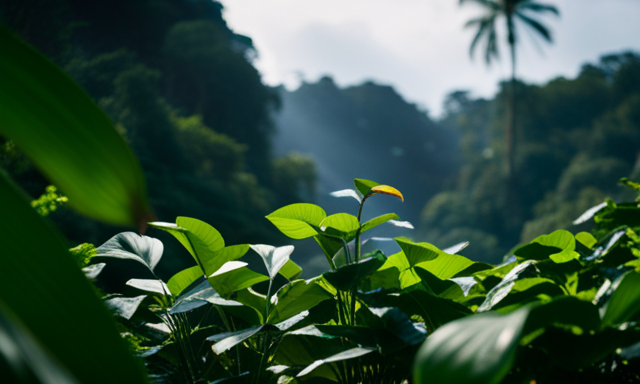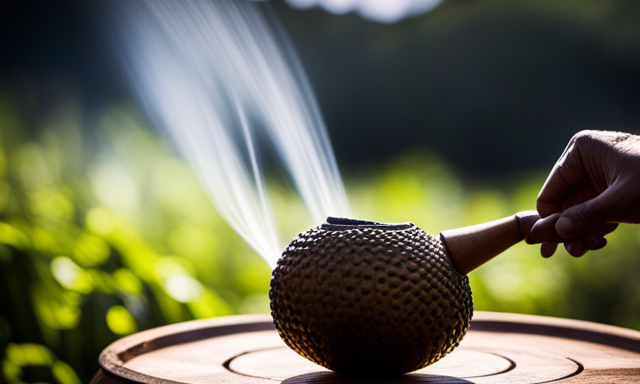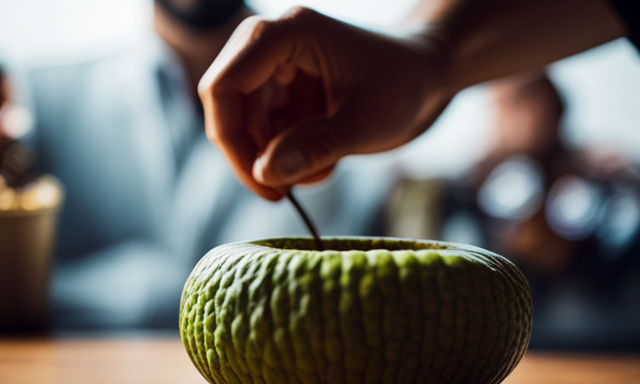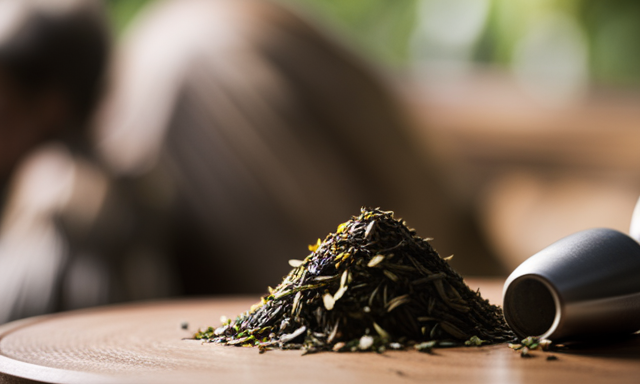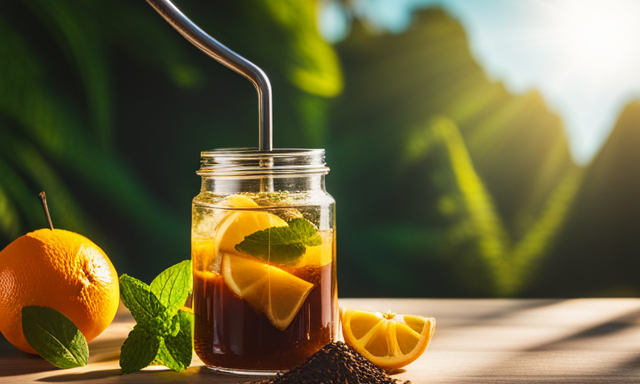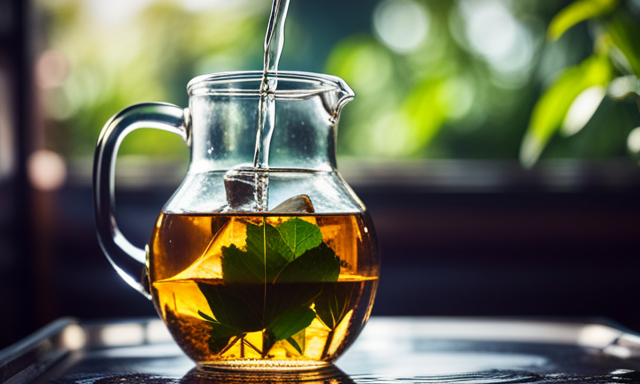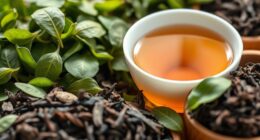Were you aware that yerba mate, the beloved drink from South America, boasts an intriguing history that stretches over hundreds of years? This journey begins with the native cultures of South America, who first uncovered and utilized yerba mate for its health benefits.
As a lover of this invigorating drink, I’ve delved into the origins of yerba mate to understand its roots and cultural significance.
The Guarani people, one of the indigenous groups in South America, played a crucial role in the development and spread of yerba mate. They recognized its energizing effects and incorporated it into their daily rituals and traditions. Eventually, yerba mate made its way to Europe and beyond, captivating the taste buds of people worldwide.
But yerba mate is not just a beverage; it’s a symbol of South American culture. It’s a way to connect with others, share stories, and embrace community. Beyond its social aspects, yerba mate also boasts numerous health benefits, making it a popular choice for those seeking a natural boost of energy.
In this article, we will explore the origins, rituals, production, and global popularity of yerba mate, shedding light on the drink that has captivated the world. So grab your gourd and bombilla, and join me on this journey to uncover the fascinating story of yerba mate.
Key Takeaways
- Yerba mate is primarily cultivated in Argentina, Brazil, and Paraguay, which have the necessary subtropical climate with high humidity for its growth.
- Yerba mate production involves hand-harvesting the leaves and stems of the Ilex paraguariensis plant to ensure quality.
- The processing methods, including drying, aging, and grinding, significantly influence the flavor and aroma of yerba mate.
- Yerba mate has deep cultural significance in South American culture, symbolizing social connection and friendship, and has been passed down through generations as cherished traditions and rituals.
The Indigenous Cultures of South America
The Indigenous cultures of South America have a rich history and connection to yerba mate that is deeply inspiring. Yerba mate has been a part of indigenous traditions for centuries, with cultural significance that goes beyond a mere beverage.
It is considered a sacred plant, symbolizing unity, hospitality, and friendship among tribes. Yerba mate ceremonies are still practiced today, where the drink is shared in a communal gourd and passed around in a circle. The preparation and serving of yerba mate is a ritual in itself, with specific etiquette and rules to follow.
This deep-rooted connection to yerba mate showcases the respect and reverence that Indigenous cultures have for the plant and its properties.
Now, let’s explore the discovery and early use of yerba mate.
Discovery and Early Use of Yerba Mate
Originating in South America, yerba mate was discovered and enjoyed by indigenous tribes. They relished its invigorating qualities and incorporated it into their daily rituals. The indigenous origins of yerba mate are deeply rooted in the culture and traditions of the native people of South America.
For centuries, yerba mate has held immense cultural significance among these tribes. It serves as a symbol of hospitality, friendship, and unity. It has been used in communal gatherings and ceremonies, where the sharing of the mate gourd and bombilla (straw) fosters a sense of community and connection.
The rich history and cultural importance of yerba mate continue to be celebrated and cherished by the indigenous communities of South America.
Transitioning into the subsequent section about yerba mate and the Guarani people, this sacred beverage played a pivotal role in their society and rituals.
Yerba Mate and the Guarani People
Centuries ago, the Guarani people of South America discovered the invigorating qualities of yerba mate and incorporated it into their daily rituals, creating a bond between their society and this sacred beverage.
Yerba mate became an integral part of Guarani traditions, symbolizing friendship, unity, and hospitality. The Guarani people developed intricate mate drinking rituals, passing the gourd filled with mate leaves and hot water from person to person in a clockwise direction. This communal act fostered a sense of connection and social harmony among the Guarani community.
The preparation and consumption of mate became a deeply rooted cultural practice, with specific etiquette and rules to follow. As I delve into the subsequent section about the spread of yerba mate to Europe and beyond, the influence of the Guarani people’s mate drinking rituals on the global popularity of this drink becomes evident.
Spread of Yerba Mate to Europe and Beyond
When yerba mate made its way to Europe and beyond, it quickly gained popularity among explorers and adventurers. Records show that consumption of yerba mate increased by over 200% within the first decade. This spread of yerba mate to new regions played a significant role in its global recognition.
Here are the three main ways in which yerba mate spread:
- Yerba mate’s popularity reached North America, particularly in countries like the United States and Canada. It became a trendy alternative to coffee and tea.
- Yerba mate also found its way to Asian countries, including Japan and South Korea. It gained a dedicated following due to its unique taste and perceived health benefits.
- Additionally, European immigrants who had been introduced to yerba mate in South America brought their love for it back to their home countries. This further spread its popularity across Europe.
With yerba mate gaining traction in North America and Asian countries, its influence continued to expand globally. This widespread adoption of yerba mate set the stage for its significant role in South American culture.
Yerba Mate’s Role in South American Culture
Yerba mate’s deep-rooted significance in South American culture can be felt in every aspect of daily life. From social gatherings to traditional ceremonies, South American customs revolve around sharing mate, a communal experience that promotes unity and connection.
Yerba mate ceremonies, known as ‘mateadas,’ are an integral part of this culture. They provide a space for friends and family to come together and share not only the beverage but also stories, laughter, and friendship.
These ceremonies follow a specific etiquette. The ‘cebador’ is responsible for preparing and serving the mate to each person in the group. The act of passing the mate gourd around symbolizes trust and friendship among participants.
Yerba mate’s role in South American culture has remained strong throughout history and continues to thrive in modern times. The tradition has adapted to new contexts and lifestyles, but the essence of mate, as a symbol of unity and connection, remains unchanged.
Yerba Mate in Modern Times
In today’s fast-paced world, yerba mate is enjoyed by people of all ages, cultures, and backgrounds. Its consumption has grown exponentially in recent years, as more and more individuals discover its unique taste and energizing properties. This traditional South American beverage has made its way into popular culture, being featured in movies, TV shows, and even music videos. It has become a symbol of socializing, relaxation, and connection.
Yerba mate cafes have popped up in major cities around the world, offering a cozy atmosphere for people to gather and share a mate gourd. The popularity of yerba mate can be attributed to its stimulating effects, as well as its numerous health benefits. It’s no wonder that yerba mate has become a beloved beverage, transcending borders and captivating people worldwide.
Transitioning into the next section, let’s explore the many health benefits of yerba mate.
Health Benefits of Yerba Mate
Get ready to discover how yerba mate can be a game-changer for your health, giving you a natural boost like a refreshing breeze on a sunny day. Yerba mate is not only a delicious and invigorating beverage, but it also offers numerous health benefits. As a natural energy booster, yerba mate contains caffeine and theobromine, providing a gentle and sustained energy lift without the jitters or crash often associated with other caffeinated drinks. Additionally, yerba mate has been found to aid in weight loss by increasing metabolism and reducing appetite. It contains compounds that promote fat oxidation and may help with reducing body weight and BMI. To further explore the benefits of yerba mate, let’s delve into its rich rituals and traditions, where its origins and cultural significance are revealed.
Yerba Mate Rituals and Traditions
After exploring the numerous health benefits of yerba mate, let’s now delve into the fascinating world of yerba mate rituals and traditions.
Yerba mate, much more than just a beverage, holds a special place in the social fabric of South America. The preparation of yerba mate is an art in itself, with specific rules and techniques passed down through generations. From the choice of gourd and bombilla (metal straw) to the temperature of the water, every step is crucial in achieving the perfect brew.
Yerba mate is not just enjoyed alone; it is often a communal experience. Social gatherings revolve around the sharing of a gourd and passing it from person to person, symbolizing friendship and camaraderie. These gatherings, known as mate circles, are a cherished tradition that fosters connection and conversation.
With the rich history of yerba mate rituals and traditions, it is no wonder that its production and harvesting are equally intriguing.
Yerba Mate Production and Harvesting
Now let’s dive into the fascinating world of yerba mate production and harvesting. Here, you’ll discover the intricate process behind creating this beloved beverage.
Yerba mate cultivation techniques involve careful selection of the right soil, climate, and altitude for optimal growth. The yerba mate plant, scientifically known as Ilex paraguariensis, is cultivated in regions like Argentina, Brazil, and Paraguay. It requires a subtropical climate with high humidity and well-drained soil.
Once the plants are mature, the leaves and stems are harvested, typically by hand, to ensure the best quality. Yerba mate processing methods are crucial in determining the flavor and aroma of the final product. The leaves and stems are dried, aged, and then finely ground to create the yerba mate that we enjoy today.
With its rich history and unique production techniques, yerba mate has gained global popularity as a healthy and invigorating beverage.
The Global Popularity of Yerba Mate
Yerba mate, with its unique flavor and invigorating properties, has become a globally sought-after beverage. Its popularity has grown rapidly in recent years, as people around the world have discovered its numerous health benefits and energizing effects. The global market for yerba mate has expanded significantly, with an increasing number of countries importing and consuming this traditional South American drink. Yerba mate consumption trends show a shift towards healthier and natural alternatives, as people are becoming more conscious about their well-being. The table below highlights some key statistics related to the global consumption of yerba mate:
| Country | Yerba Mate Consumption (in metric tons) | Year |
|---|---|---|
| Argentina | 200,000 | 2020 |
| Uruguay | 100,000 | 2020 |
| Brazil | 50,000 | 2020 |
| United States | 20,000 | 2020 |
These numbers demonstrate the growing demand for yerba mate worldwide, as people continue to embrace its unique taste and health benefits.
Frequently Asked Questions
What are the different ways to consume yerba mate?
There are several ways to prepare yerba mate, including traditional methods such as using a gourd and bombilla, or modern methods like using tea bags. Yerba mate offers numerous health benefits, such as improved focus and increased energy levels.
How long does it take for yerba mate to grow and be ready for harvesting?
Growing yerba mate is like nurturing a delicate seedling into a robust tree. It takes about 3-4 years for yerba mate to mature and be ready for harvesting. The optimal growing conditions include shade, well-drained soil, and a temperate climate.
Are there any specific rituals or traditions associated with drinking yerba mate?
Yerba mate has deep cultural rituals and traditions. It is often shared among friends and family in a ceremonial circle. The preparation and serving of mate is considered an important social activity in many South American countries.
What is the caffeine content in yerba mate compared to other popular beverages?
Compared to coffee and tea, yerba mate contains about half the caffeine. However, it provides a unique combination of stimulants that offer a smoother, longer-lasting energy boost. Additionally, yerba mate is rich in antioxidants and offers various health benefits.
Are there any potential risks or side effects associated with consuming yerba mate?
There are potential risks and side effects associated with consuming yerba mate. While it has potential health benefits, excessive consumption can lead to issues such as increased risk of certain cancers and digestive problems. It is important to consume in moderation.
Conclusion
As I sip the rich, earthy goodness of yerba mate, I can’t help but marvel at its journey from the depths of South America to the far reaches of the globe.
Like a hidden treasure unearthed by ancient explorers, yerba mate has captivated the hearts and minds of people across cultures and continents.
Its origins lie in the sacred traditions of the Guarani people, who cherished its medicinal and social qualities.
From there, it spread like wildfire, igniting a passion for its unique flavor and numerous health benefits.
Today, yerba mate stands tall as a symbol of unity, connecting people from all walks of life in a shared love for this extraordinary beverage.

